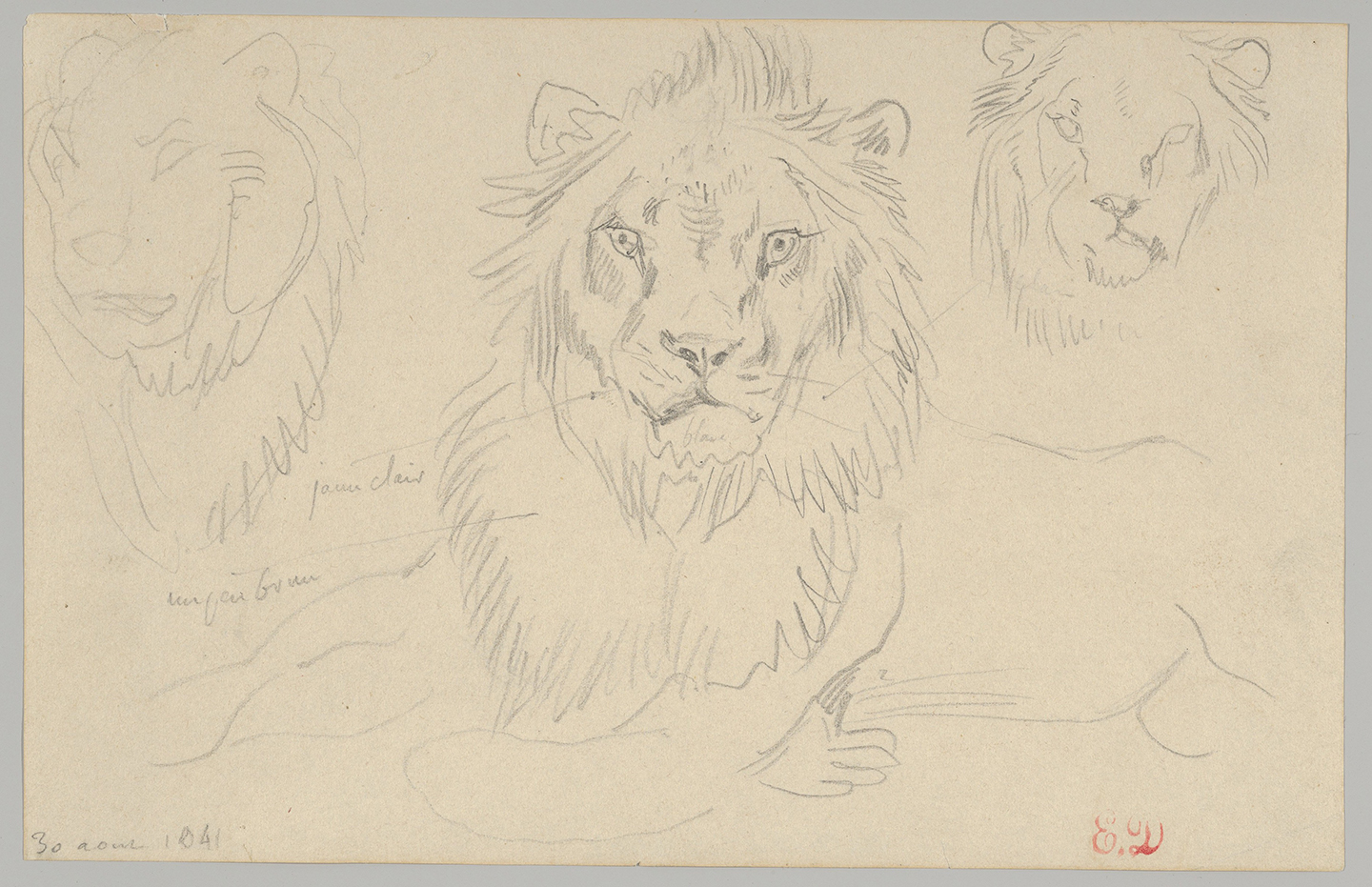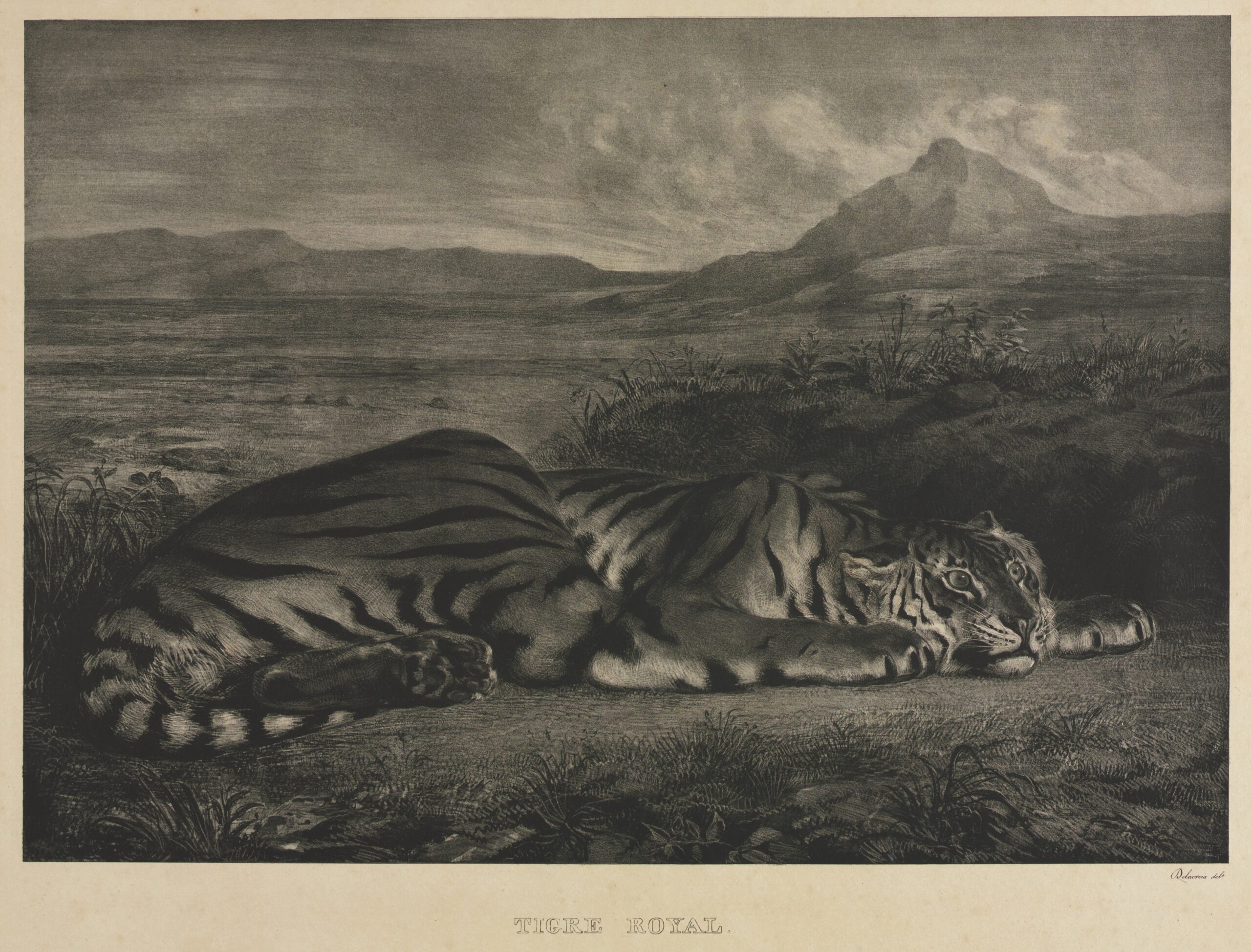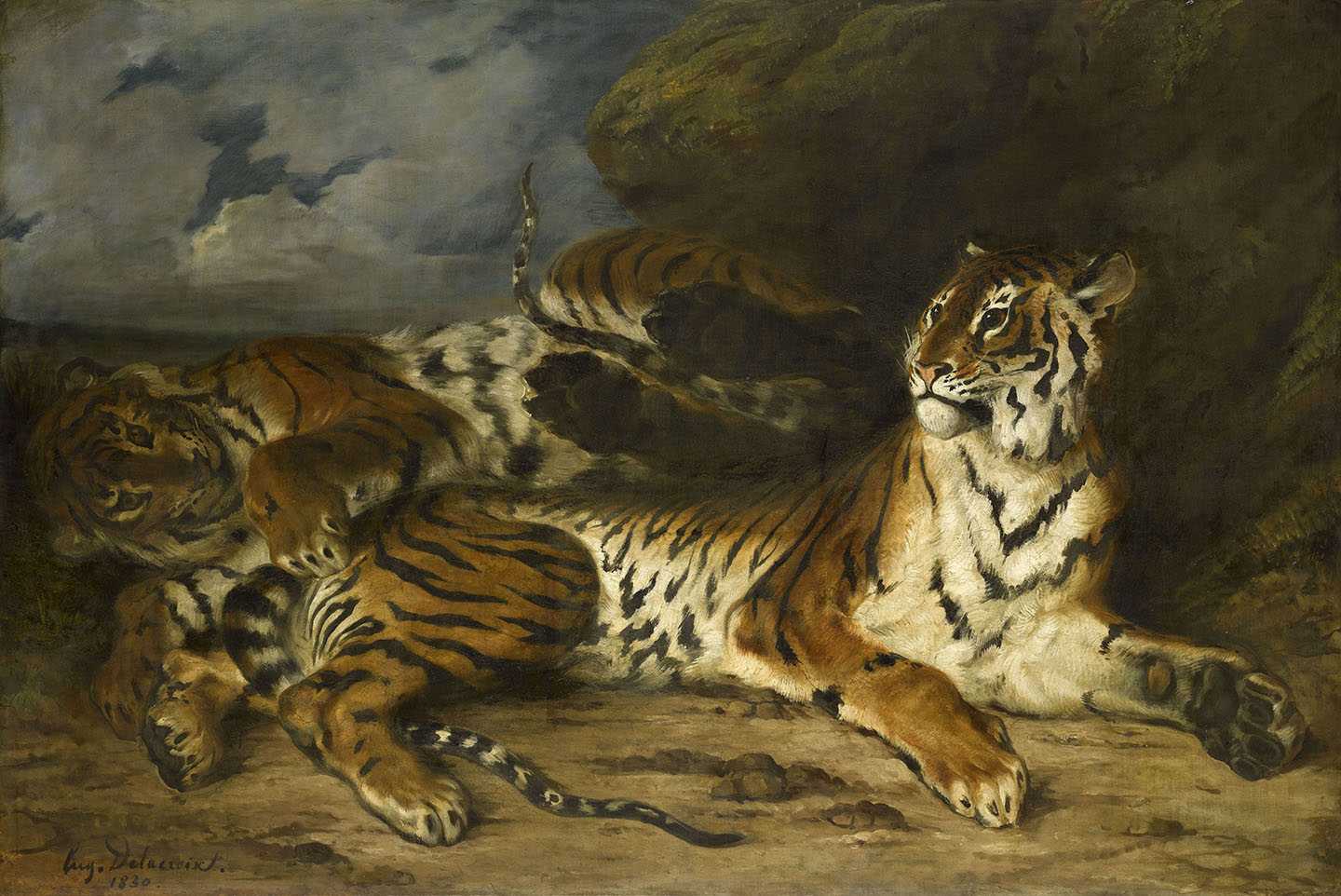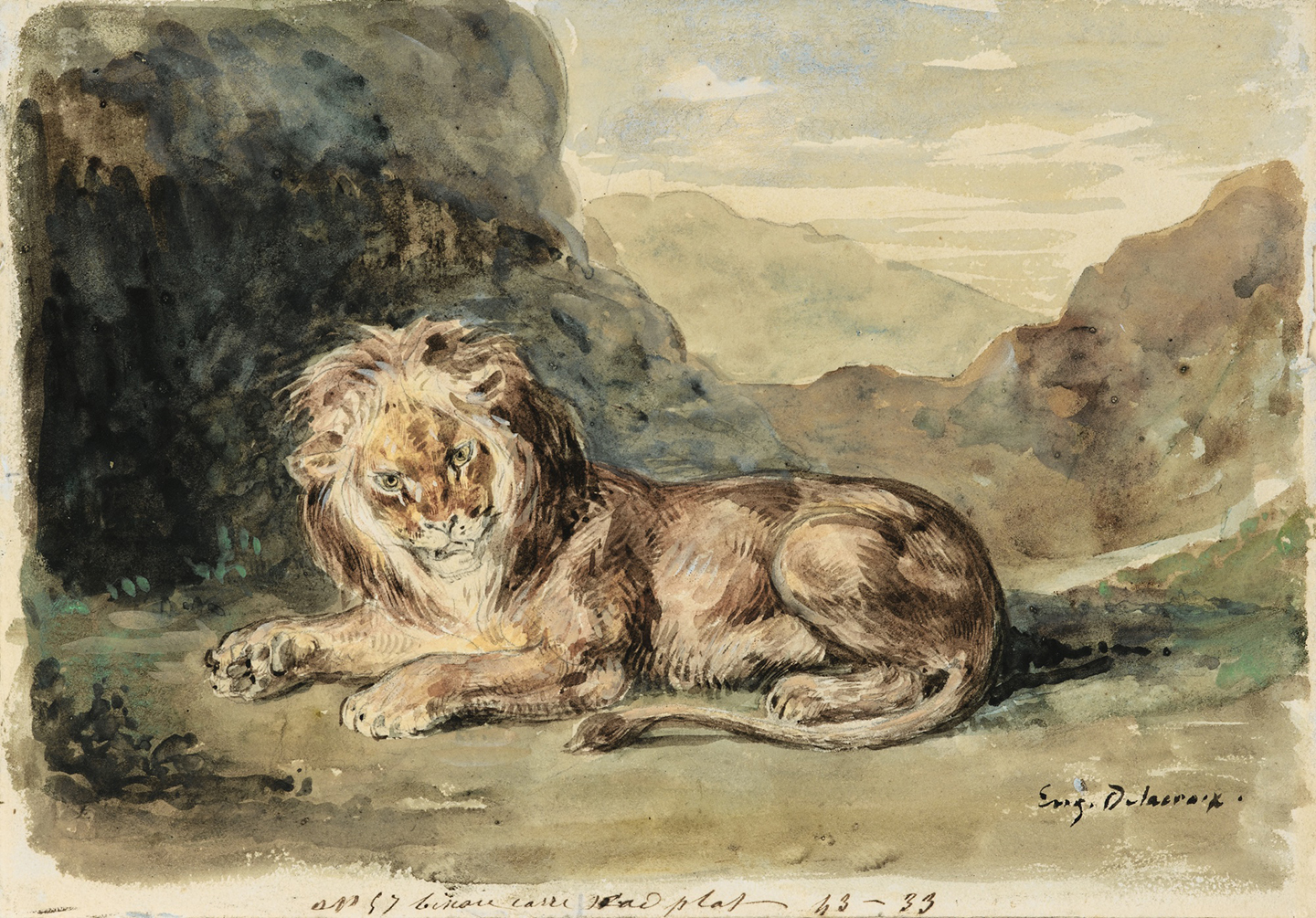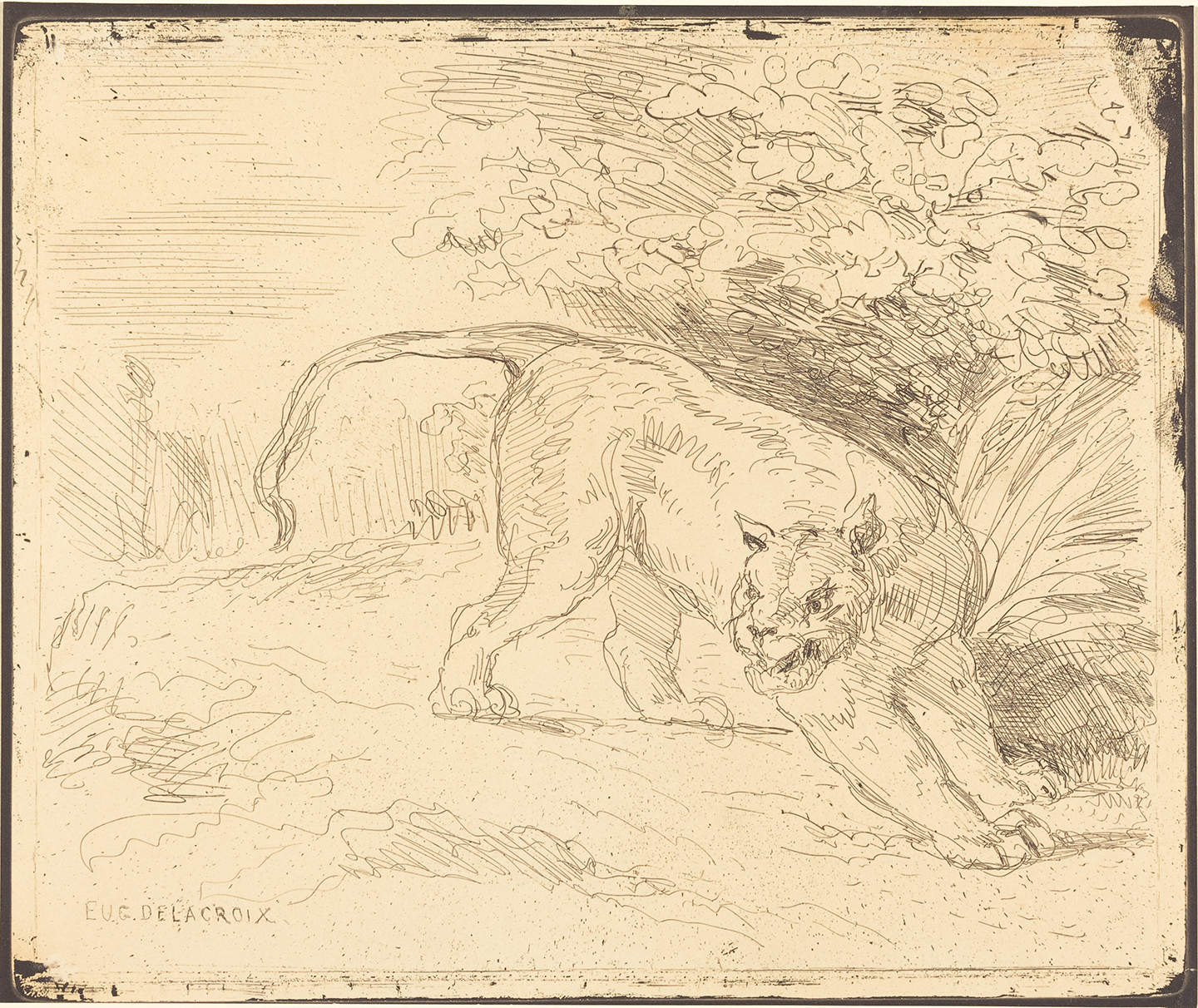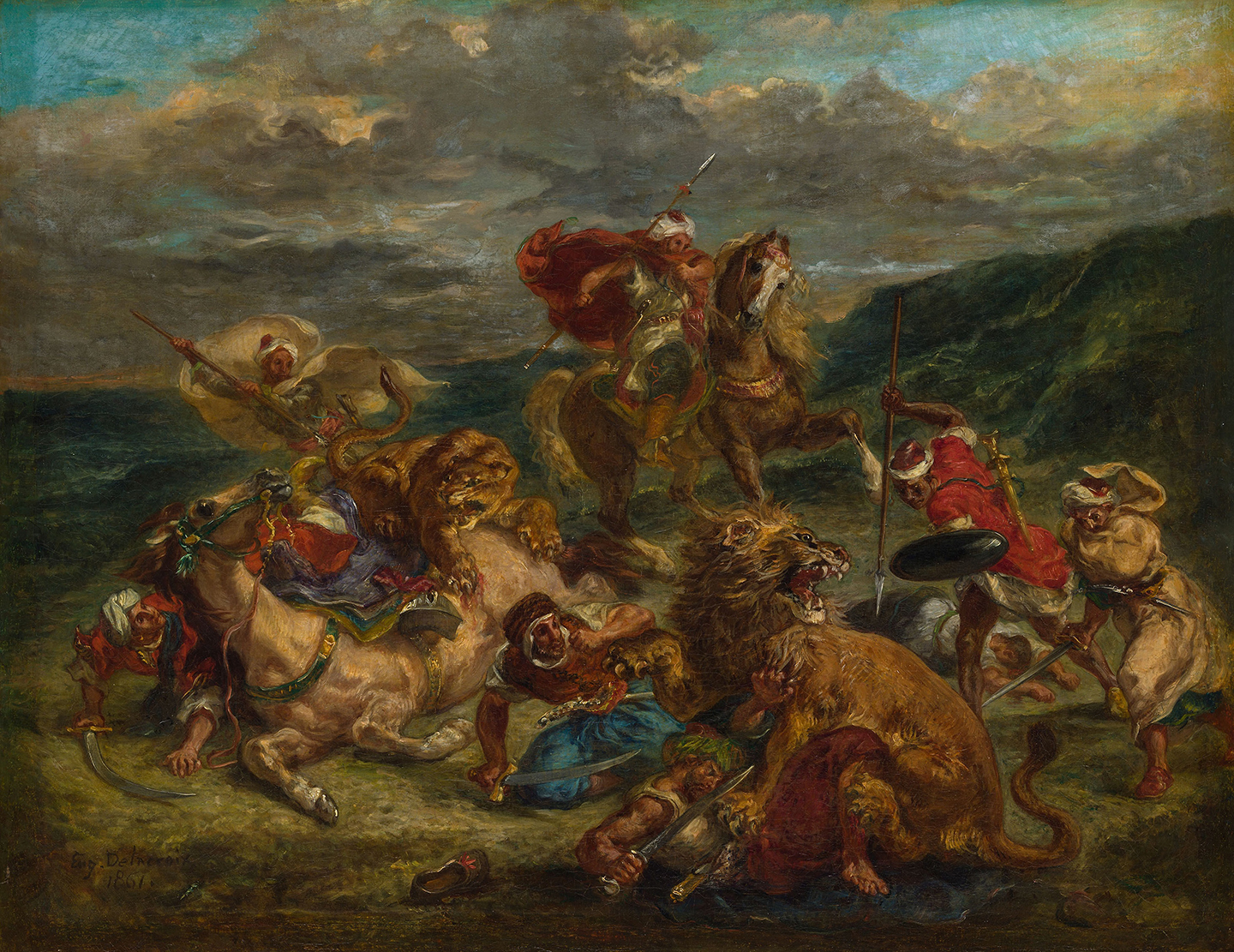Delacroix (1798–1863) was a prominent French artist born into an influential family. His father held a significant position in politics, while his mother hailed from a lineage of skilled artisans. Although he studied under professional artists and attended the École des Beaux-Arts for a time, Delacroix was largely self-taught. He honed his skills by frequenting the Louvre to study and copy the masterpieces of Peter Paul Rubens and Venetian Renaissance artists. His early work exhibited an extravagant use of color and narratives inspired by renowned literary figures such as Dante, Shakespeare, and Byron.
Delacroix employed wild animals as subjects to express his fascination with capturing the essence of their anatomy, vitality, and the distant lands they inhabited. He rarely traveled outside France but found ample opportunities to study animal life through numerous visits to the Jardin des Plantes in Paris, a zoo that housed various exotic animals. His exploration of felines began around the late 1820s. Delacroix considered these outings invigorating and crucial for honing his observation skills when it came to understanding nature. The Metropolitan Museum of Art possesses a charming sketch titled “A Lion, Full Face, August 30, 1841,” which originates from one such visit to the menagerie. The graphite work on paper features color notes in reference to the mane and nose.
An important early feline work by Delacroix is a lithographic series from 1829 called “Royal Tiger.” Regarded as one of the finest 19th-century lithographs, this work places the majestic tiger on a bluff overlooking a vast plain. The hunter appears poised and ready to pounce at a moment’s notice. Delacroix masterfully achieves a naturalistic representation of the tiger while imparting the artwork with a painterly quality through his manipulation of the medium.
In 1830, Delacroix painted one of his most beloved works in the realm of big cats, “Young Tiger Playing With its Mother (Study of Two Tigers),” which is part of the Louvre’s collection. The painting received widespread acclaim upon exhibition, with a critic writing that “this singular artist has never painted a man who resembled a man as closely as his tiger resembles a tiger… It is astonishing to see animals painted with greater force, exactness and resemblance than men.” This charming scene showcases noble tigers radiating personality, poise, and playfulness through the use of rich colors and textures.
Delacroix continued to explore lions and tigers on canvas and paper in the subsequent decades. One such example is the captivating watercolor “Lying lion in a landscape,” depicting a confident and fierce tawny lion set against a bright palette with a darkened cave in the background.
Delacroix’s first major work featuring big cats was monumental in scale. Upon its exhibition, poet Charles Baudelaire marveled at it, stating, “Never have more beautiful, more intense colours been channelled through the eyes to the soul.” Sadly, this masterpiece suffered partial damage during a fire in 1870 and survives today only as a fragment.
Delacroix created additional versions of the theme in the 1850s and early 1860s. One of the most admired examples is the 1860-61 “Lion Hunt” at the Art Institute of Chicago, completed just two years before Delacroix’s death. The painting marked the pinnacle of the artist’s explorations into the complex relationship between man, beast, and nature.
The violence inherent in works such as the “Lion Hunt” is juxtaposed with a more contemplative and restrained yet powerful painting dating to 1862. Tiger Playing With a Tortoise” was sold at Christie’s for $9.87 million in the 2018 “The Collection of Peggy and David Rockefeller” sale, becoming one of the most expensive works ever sold by the artist. The auction catalogue explains that the work depicts a surprising encounter between a dominant, powerful predator and a much smaller, weaker species. In this scene, the tiger’s instinct to kill is supplanted by curiosity and confusion as it plays with its captured tortoise under its paw.

